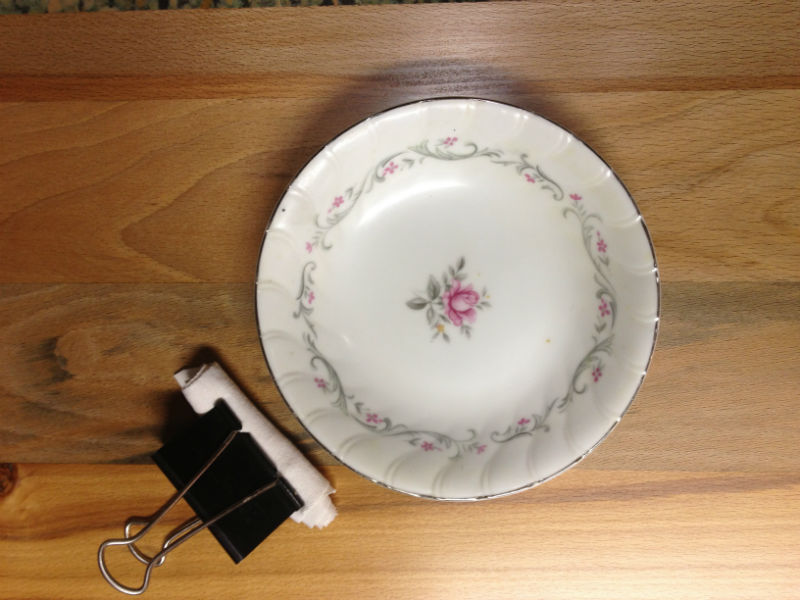In last month’s Tips column, I wrote that I’m a wipe-on poly kind of guy. What’s to like about wipe-on poly?
Gee! Just about everything! It’s reasonably priced. There are a kazillion (sorry, Steve) manufacturers, so, if you have a favorite brand, you can choose it. It’s relatively non-toxic, and you can even purchase water-based wipe-on polyurethane, if you like. Equipment needs are minimal. No air compressor. No airless sprayer. No fancy brushes. All the gear you need is a metal spring binder clip and some old T-shirt material. If you’re not saving your old T-shirts, you should begin to. You can click this link to read about how I do it.

When I’m done, I unroll the fabric, lay it on the rim of the trash can to cure, and throw it out a few days later, once it is totally dry.
Now, I know there are advantages to other methods and other products, and this month we’d like to know what your favorites are. Give us your vote and leave us a comment, too.
Jim Randolph is a veterinarian in Long Beach, Mississippi. His earlier careers as lawn mower, dairy farmer, automobile mechanic, microwave communications electronics instructor and journeyman carpenter all influence his approach to woodworking. His favorite projects are furniture built for his wife, Brenda, and for their children and grandchildren. His and Brenda’s home, nicknamed Sticks-In-The-Mud, is built on pilings (sticks) near the wetlands (mud) on a bayou off Jourdan River. His shop is in the lower level of their home.Questions and comments on woodworking may be written below in the comments section. Questions about pet care should be directed to his blog on pet care, www.MyPetsDoctor.com. We regret that, because of high volume, not all inquiries can be answered personally.


I make classical guitars in a very small shop, French polish is the easiest and safest way for me to create a world class finish.
Wilson’s reply is brief but explains the virtues of French Polish at its best. Good on ya.
Shellac is not french polish, although french polish is shellac. Surprised it was not an option.
Spray lacquer is a close second to wipe-on poly especially for smaller parts.
After a career as a cabinet maker and woodworker I sprayed Lacquer for years. Then I got cancer and one of the prime causes listed were shop workers and the chemicals involved. In my retirement I started building handmade acoustic guitars and discovered shellac and the French Polish method. I use pure grain alcohol 180 proof l to mix the shellac flakes No denatured alcohol which has methanol a poison.. so my shellac is organic and no poisons. With learning a good method for French polish it looks every bit as good as lacquer. It’s hard but water, sweat, and alcohol can mar the finish but unlike lacquer it is very easy to repair and a couple of good top coats of shellac will make an old finish top notch again…. good prep and grain filling like all good finishes is essential.. It’s great using Rosewoods, mahogany, highly figured Koa, and quilted Maples and some very exotic woods from around the world for guitars.Now being 70, nothing beats small light weight pieces of wood to work with…. I love the precision it requires, often to the tenth of a millimeter, is what Lutherie provides. The results are music to my ears…
As primarily a turner, I enjoy wax as an easy way to finish wood. Durable, easy to work with and the smell of it lingers(!). For cabinet work, I like poly too, but even prefer to wax these.